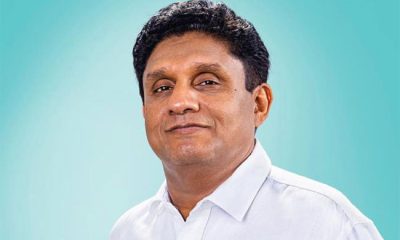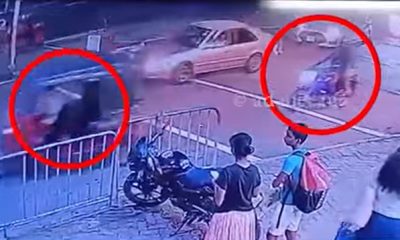Sports
Susantha reveals key to success of Ratnayake Central
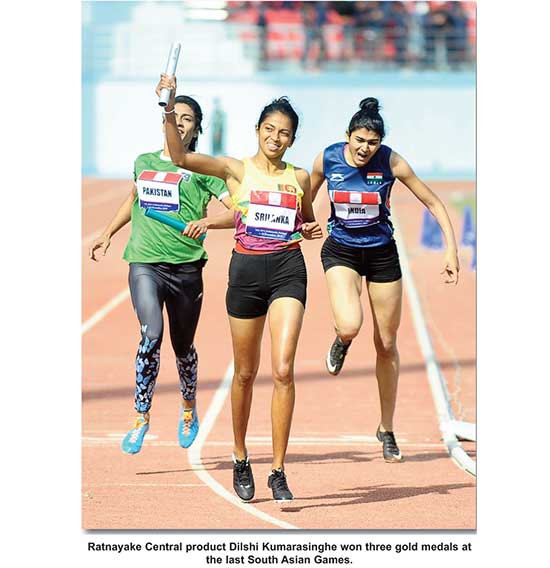
by Reemus Fernando
Dilshi Kumarasinghe, the golden girl of the last South Asian Games had been permitted to stay in the hostel of Sports School Ratnayake Central College, Walala for months after completing her education until she found employment, because of the far-sightedness of Central Province authorities, both past and present, Susantha Fernando, who trained her to win three Golds at the regional event, revealed in an interview with The Island. That was a decision the authorities of other Sports Schools or seats of learning, bound by various rules and regulation, would hesitate to take, he said.
With the restructuring and reinvigorating of Sports Schools in the country being discussed by the Ministry of Education and the Ministry of Sports, The Island interviewed Susantha Fernando, the coach behind the success story of Ratnayake Central Walala, the most successful Sports School of the country.
Fernando who culminated his three decades long coaching stint with t
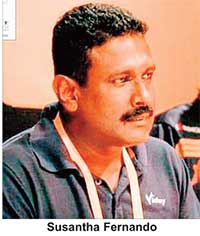
he Sports School recently, revealed that the special place of prominence given to sports by the Central Province education authorities and the individualized training plans were among the reasons behind the unprecedented success of Ratnayake Central.
Ratnayake Central dominated track and field sports for more than two decades. If title victories are of any indication to the success of a Sports School, then there was no school that could even come closer to beat the records set by Ratnayake Central. There are three major Schools Athletics Championships conducted yearly, namely the Sir John Tarbet Senior, All Island Schools Relay and the All Island Schools Games Athletics. They won both the Boys and Girls titles together in these championships on an unprecedented 19 occasions. Under Fernando’s stewardship Ratnayake Central athletes have gone on to win at Junior Asian Athletics Championship (seven medals), Asian Youth Games, Youth Olympic (1000m B grade 3rd), South Asian Junior Athletics Championships (7 medals at the last meet), Asian Athletics Championships, Asian Schools Games, South Asian Games (four goalds at the last edition) and many regional international events apart from representing the country at many World Youth, World Junior, Asian Championship, World Championships, Commonwealth Games and Asian Games. Here are the excerpts from the interview The Island had with Fernando.
What makes Ratnayake Central different from other Sports School?
“Ratnayake Central was selected as a Sports School because we performed better than any other school in the Central Province. We are the only Sports School that is run by Provincial administration. When the school was established Palitha Elkaduwa, the former Secretary of Education of the Central Province played a special role. The central province circular on the Sports School was a very strong one. There were two other sports schools in the Central Province (Poramadulla Central and Weera Keppetipola NS, Akuramboda). But they were taken over by the Ministry of Education later. The officials who made the school a Sports School understood the importance of sports. Even today the Department of Education of the Central province has no hesitation in going out of the way to help Sports programmes. We were also lucky to have a sports loving Director of Education in Thilak Ekanayake,” said Fernando.
Asked to be more specific Fernando compared and contrasted Ratnayake Central with other sports schools.
“Generally Sports Schools provide scholarships and recruit athletes for grade eight. But if we identify a future prospect who is in a higher grade we could take the athlete for that higher grade if there is a vacancy. That is not so with the Sports Schools that are under the Ministry of Education. They are strict. Dilshi’s case is another example. We knew that she is a future prospect. We could keep her in the hostel for months after she finished her Advance Level until she found employment in the Army. She went on to win three golds at the South Asian Games. We could do that because the Central Province Education authorities understood the need. I don’t think that would be possible with any other Sports School.”
Media had been highlighting the absence of a 400 metres track at Ratnayake Central for years. How could the school still perform better than the schools which had facilities.
“I had a plan for every athlete. At the school we maintained files for every athlete. There were over 70 files every year. The individual training plans were the secret. When others take leave for three months during school vacations we continued training. We conduct special training. Go for high altitude training. We send home sports scholarship holders for only ten days during vacation. My recommendation for other Sports Schools too is to continue training with probably ten days of leave during the school vacation. True we did not have a proper track. Not even a proper 200 metres track. The 200 metres track at Ratnayake Central has a 55% bend which is harmful for athletes. From 2018 we could take athletes for training to Digana where there is a good 400 metres track.
How do you compare the financial support Ratnayake Central received with other Sports Schools?
“The Central Province department of education has been good enough to understand the need for funds to run a proper programme. We’ll just take the case of competitions. You have to spend a lot of money on transport and food during competitions. There was no restriction on funds for Ratnayake Central in meeting expenses on transport or food for athletes. The other Sports Schools are given only rupees 25,000.00 for the entire year for transport and food to take part in meets. You have to travel to three or four national meets per year. It is important that the athletes we train take part in these meets and they are provided proper transportation, food and lodgings. I have seen sports officials of Sumana Balika (Sports School) preparing meals for their athletes when they go for national meets to save funds. That is pathetic.”
Central Province also increased the allowance paid to sports instructors to encourage them and provide a substantial scholarship money for athletes, when the sports instructors under the Ministry of Education receive a meager amount of rupees 1,000.00 monthly as an allowance.”
The Central Province education authorities promoted Fernando to the Assistant Director of Education – Sports and Physical Education post of the Wattegama Zonal in 2003 and was also responsible for monitoring sports progress of the zone which became one of the best zones of the country. Here are his views on the monitoring process of Sports Schools.
“There should be a proper monitoring system for Sports Schools. Some of the Sports Schools in the country became defunct because there was no proper monitoring system. There should also be qualified individuals to do that. Qualified officials who can advise the coaches of the Sports School and who could make recommendations on their coaching programmes. At present I don’t think that the Ministry of Education has enough qualified individuals to do that part.”
Many scholar athletes passing out from Ratnayake Central have gone on to become physical education teachers. How did Ratnayake Central looked after the education of scholar athletes.
“We provided free tuition to athletes after school when it was necessary. And there was continuous monitoring of the progress they made in education. We hardly had disappointments when results of exams came. Many have become Physical Education teachers. Currently there are over 400 physical education teaches who had their education at Ratnayake Central. They are serving at different schools. There are also good number of athletes who have gone on to become bank managers, Assistant Directors of Education to managers of leading private firms. For those who persevere a career in athletics there should be a system to look after them after they leave Sports Schools. The future prospects who are identified at Sports Schools should be looked after. The Sports Ministry should take the responsibility of these athletes after they leave schools.”
Often there are administration deadlocks between sports officials and principals leading to sports being given secondary status at schools. Fernando said that there were no such impasses at Walala but insisted that sports instructors should have some authority at Sports Schools. “In my opinion the head or the sports instructor of a Sports School should have some authority for him to run a successful programme.”
Fernando had a long stint (30 years) at Walala with the school and the old students association continuing to insist on acquiring his service. He continued as the head coach of Ratnayake Central while also functioning as the Assistant Director of Education – Sports at Wattegama Zone. This is his opinion on transfers.
“Teacher service requires teachers to be transferred according to vacancies that exist. There should be some leniency with regard to sports instructors. You cant change heads and expect good results in sports. There should be continuity for a training programme to be successful.”
He also insisted on the need to recognise the achievements of coaches and the need to provide suitable jobs for those passing out from would be Sports Universities as there is lack of suitable jobs even for those passing out from Universities with Sports Science and Physical Education Degrees at present.
While he has received praise for the yeoman service he has rendered to the field of sports, some national coaches have directed criticism at him citing that his trainees who had excelled at school level had not replicated those performances at senior national level.
“A coach can only help an athlete improve 30% of his performance level. Good performances are a combination of natural ability and proper coaching. A wast majority of athletes Ratnayake Central recruited were average athletes. Ratnayake Central is not situated in a town. Parents will opt for schools in Kandy when there is a choice between Ratnayake Central and a famous school in Kandy. Most athletes when they first came to the Sports School, were just winners at inter house meets, Divisional or Zonal meets. Inoka (many time marathon champion and first South Asian Games marathon medalist for SL) was just an inter house meet winner. She competed at national level for 20 years. I can give many examples. If there were special talents they had been trained accordingly to reach international level. For example Dilshi Kumarasinghe is a special talent and I am working on to help her reach top level. Indunil Herath (current national 800 metres record holder) was a long jump winner at Handaganawa when he was recruited. All athletes who came to Ratnayake Central underwent talent identification tests and later introduced to suitable disciplines which they had not even witnessed before. Herath had to leave the school for reasons beyond my control. Hadnt he successful? Raju (Geethani Rajasekara- first Sri Lankan marathoner at Olympics, trained by Sajith Jayalal after she left for Colombo) went to Colombo after marriage. Numbers will answer the critics. If those critics can tell of a single school which had produced more athletes to Senior National Athletics teams than Ratnayake Central then there should be some truth in their criticism. Ratnayake Central is the school that has produced the highest number of athletes to National Teams.”
Latest News
Renuka and Deepti back with a bang as India seal the series

Shafali Verma continued her superb form, cracking a 42-ball 79 as India brushed aside Sri Lanka once again to win the third T20I in Thiruvananthapuram and complete a series victory.
The template was familiar and ruthlessly executed: win the toss, bowl, restrict Sri Lanka, and then stroll through the chase. Just as in the first two matches, India were clinical. Renuka Singh spearheaded the bowling, with support from Deepti Sharma, to keep Sri Lanka to 112 for 7 before Shafali wrapped up the chase with 40 balls to spare.
Sri Lanka shuffled their opening combination, leaving out Vishmi Gunaratne and promoting Hasini Perera to partner Chamari Athapaththu. Perera showed early intent, striking two boundaries off Renuka, who returned to the XI in place of Arundhati Reddy, in the first over.
India introduced Deepti in the third, and Perera greeted her with another boundary. While Perera looked positive, Athapaththu struggled to find her rhythm, managing just 3 off 12 in a stand worth 25 – Sri Lanka’s highest opening partnership of the series. The pressure told in the fifth over when Athapaththu attempted a cross-batted swipe and top-edged to mid-on, handing Deepti her first wicket.
Renuka then turned the screws in her second over of the powerplay. After Perera pierced the infield early in the over, Renuka placed Deepti at short third, a move that paid dividends as Perera edged one straight to the fielder. She fell for 25 off 18, unable to capitalise on her start. Renuka capped off the over in style, having Harshitha Samarawickrama caught and bowled off the final delivery, swinging the powerplay decisively India’s way.
From there, the contest drifted into territory that had become all too familiar over the course of the series.
With Sri Lanka at 45 for 4 at the halfway stage, Imesha Dulani – coming into the XI for this match – combined with Kavisha Dilhari to add some much-needed runs for the fifth wicket. Dulani, reprieved on 8 when Shree Charani put down a chance, found the gaps, while Dilhari injected some intent, launching Kranti Gaud for a six.
The partnership, however, was short-lived. Deepti ensured it did not go beyond 40 runs, having Dilhari caught at deep midwicket for 20 en route to becoming the joint highest wicket taker in women’s T20Is.
India were not flawless in the field, putting down two more chances – Kaushini Nuthyangana on 4 by Gaud and Malsha Shehani on 5 by Deepti – but Sri Lanka failed to make India pay, drifting to 112 for 7 at the end of 20 overs.
Shafali set the tone for the chase immediately, launching Shehani for 6, 4 and 4 in the opening over. Smriti Mandhana struggled to find fluency at the other end, but it scarcely mattered with Shafali in full flow. She took on debutant Nimasha Meepage in the third over, picking up two boundaries, before Mandhana fell for 1 in the fourth, also burning a review in the process.
Shafali, meanwhile, continued to show her full range. In the fifth over, she took Meepage for 19 runs: starting with an uppish drive to the extra cover boundary, a back-foot whip that raced through midwicket, a full toss that was muscled for six over extra, and finishing the over by dropping to one knee to loft another boundary over cover. By then, she had raced to 43 off just 19 balls, bringing up her half-century in the following over from 24 deliveries. India, on the whole, were 55 for 1.
Shafali continued to dictate terms, scoring 68.7% of her team’s runs in a completed innings – which is a new national record – and rising to No. 4 on the list of India’s highest run-getters in women’s T20Is.
The win, along with a 3-0 lead in the five-match series, marked Harmanpreet Kaur’s 77th as captain, going past Meg Lanning to become the most successful captain in the format.
Brief scores:
India Women 115 for 2 in 13.2 overs (Shafali Verma 79*, Harmanpreet Kaur 21*; Kavisha Dilhari 2-18) beat Sri Lanka Women 112 for 7 in 20 overs (Hasini Perera 25, Imesha Dulani 27, Kavisha Dilhari 20, Kaushini Nuthyangana 10*; Renuka Singh 4-21, Deepti Sharma 3-18) by eight wickets
(Cricinfo)
Latest News
Australia seize handy lead after Josh Tongue five-for on 20-wicket day

Latest News
BCB takes ownership rights of Chattogram Royals for remainder of BPL
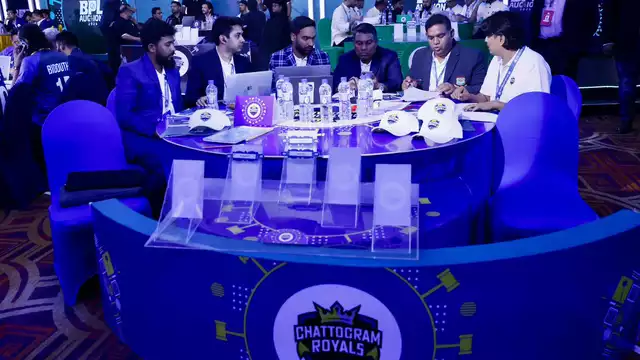
[Cricbuzz]
-

 News5 days ago
News5 days agoMembers of Lankan Community in Washington D.C. donates to ‘Rebuilding Sri Lanka’ Flood Relief Fund
-

 News3 days ago
News3 days agoBritish MP calls on Foreign Secretary to expand sanction package against ‘Sri Lankan war criminals’
-

 Business7 days ago
Business7 days agoBrowns Investments sells luxury Maldivian resort for USD 57.5 mn.
-

 News6 days ago
News6 days agoAir quality deteriorating in Sri Lanka
-

 News6 days ago
News6 days agoCardinal urges govt. not to weaken key socio-cultural institutions
-

 Features7 days ago
Features7 days agoHatton Plantations and WNPS PLANT Launch 24 km Riparian Forest Corridor
-
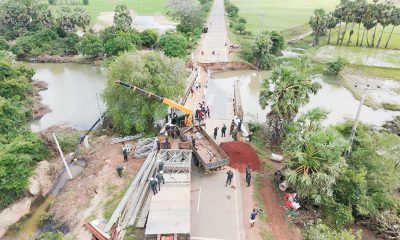
 Features7 days ago
Features7 days agoAnother Christmas, Another Disaster, Another Recovery Mountain to Climb
-

 Features5 days ago
Features5 days agoGeneral education reforms: What about language and ethnicity?




